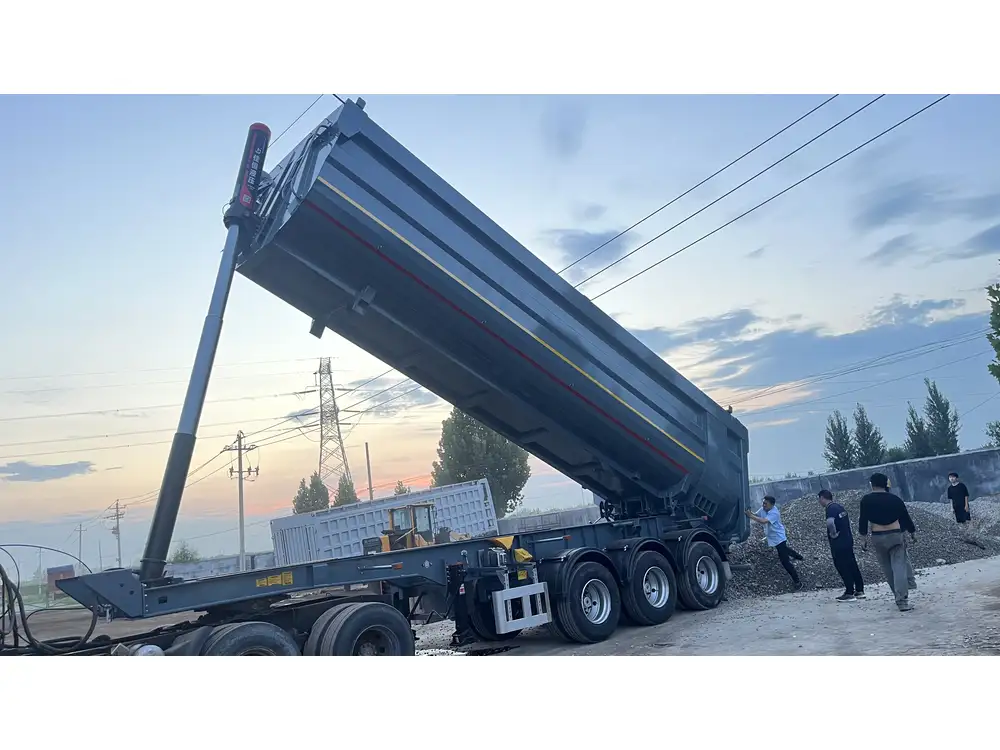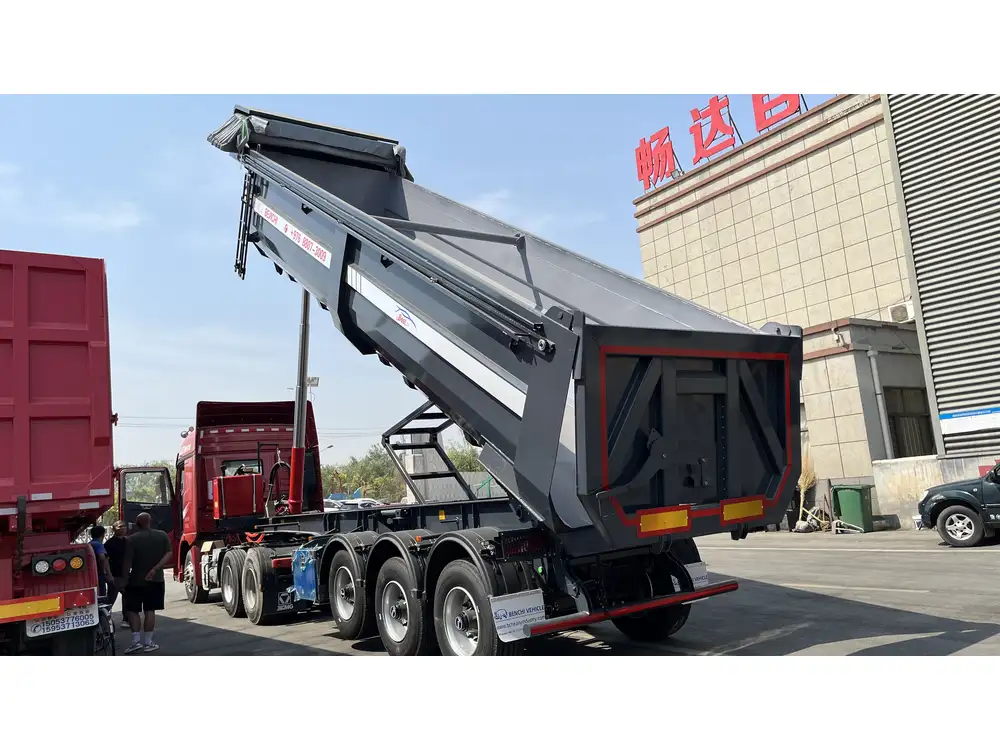Loading a semi-trailer may seem straightforward, but it is a task that requires precision, knowledge, and adherence to safety protocols. Ensuring that cargo is loaded correctly not only maximizes the efficiency of transport but also mitigates the risk of accidents and damage to goods. In this guide, we will explore various methods, tips, and best practices for loading semi-trailers to ensure that freight reaches its destination safely and effectively.
Understanding the Basics of Loading a Semi-Trailer
Load Distribution
Load distribution is the cornerstone of loading a semi-trailer. Proper distribution helps maintain vehicle stability and prevents hazards on the road. Uneven loading can result in:
- Overloading: Exceeding the weight limit can result in penalties and increase the risk of trailer failure.
- Instability: Poor weight distribution can cause swaying, which can lead to loss of control.
- Tire Wear: Improper load can lead to uneven tire wear, affecting performance and increasing maintenance costs.
To achieve optimal load distribution, consider:
- Center of Gravity: Place heavy items lower in the trailer to lower the center of gravity, enhancing stability.
- Weight Placement: Distribute weight evenly from front to back and side to side.

Load Securement
Securing the load is equally important in ensuring that cargo remains intact during transport. To properly secure loads within a semi-trailer:
- Tie-Downs: Use high-quality straps, chains, and binding materials to secure the load.
- Blocking and Bracing: Employ dunnage, wedges, and other blocking methods to prevent shifting.
- Load Bars: Consider using load bars to create sections that prevent movement.
Regulatory Compliance
Every state has specific regulations governing the loading of semi-trailers. Always be informed about weight limits, material restrictions, and load securement standards applicable in your area. Familiarize yourself with the following compliance measures:
| Regulatory Aspect | Description |
|---|---|
| Maximum Weight Limit | Ensure the total weight does not exceed legal limits. |
| Load Securement Standards | Adhere to federal and state load securement guidelines. |
| Vehicle Inspection Requirements | Conduct pre-trip inspections for compliance. |
Step-by-Step Process for Loading a Semi-Trailer

1. Pre-Loading Preparations
Before loading begins, proper preparations must be made:
- Assess the Trailer: Inspect the semi-trailer for any damages, ensuring it is safe and fit for loading.
- Equipment Ready: Have all tools and equipment (like pallet jacks, forklifts, straps) readily available.
- Plan the Load: Create a loading plan considering weight distribution, access for unloading, and stackability of goods.
2. Positioning the Semi-Trailer
Ensure that the semi-trailer is situated on level ground. This minimizes the risk of shifting loads and allows for easier maneuverability when utilizing loading equipment.
3. Loading the Cargo

Bulk Loading vs. Palletized Loading
Bulk Loading: Useful for loose items or when using a conveyor system.
- Technique: Load larger items first to create a stable base and gradually fill around the edges.
Palletized Loading: Ideal for items on pallets.
- Technique: Stack pallets uniformly, ensuring weight is evenly distributed.
Loading Tips:
- Load heavier items first and secure them in the front of the trailer.
- Stagger lighter items on top to prevent crushing.
4. Securing the Load
Once loading is complete, ensure that every item is secured properly to prevent movement. This is vital for compliance and cargo protection.
- Use a sufficient number of tie-downs, considering the weight and size of the cargo.
- Ensure that all secured items do not exceed the trailer’s sides and are clearly visible.
5. Final Inspection
Conduct a thorough inspection after loading but before departure. Ensure:
- All items are secured and stable.
- No protruding items that may pose risks.
- Compliance with weight restrictions and regulations.

Best Practices for Safe Loading
Utilizing Technology
Modern technology can enhance the loading process. Consider employing tools such as:
- Load Weight Sensors: To monitor weight distribution.
- GPS Tracking: To optimize routes, ensuring trailers are loaded properly based on destination requirements.
Training and Safety Measures
Employee Training is crucial. Ensure all personnel involved in loading operations are trained on:
- Safe loading techniques.
- Emergency protocols in case of load failure.
- Correct usage of loading equipment.

Safety Gear Compliance
Always adhere to Personal Protective Equipment (PPE) regulations:
- Steel-toed boots to protect feet.
- High-visibility vests for on-site safety.
- Gloves to protect hands from cuts and abrasions.
Troubleshooting Common Loading Issues
Uneven Load Distribution
- Symptoms: Trailer sways or tilts during driving.
- Solution: Re-distribute cargo by adjusting placement and securing items tightly.

Slide-Back or Forward Movement
- Symptoms: Items shifting while on the road.
- Solution: Use additional securement techniques such as edge protectors or interlocking loads.
Inadequate Securement
- Symptoms: Loose items shift and fall during transit.
- Solution: Re-evaluate securing methods; utilize additional tie-downs if necessary.
Weight Overload Indicators
- Symptoms: Warning displays on vehicle dashboard.
- Solution: Remove excess weight immediately and consult with the load plan.

Conclusion: The Importance of Proper Semi-Trailer Loading
The safety, efficiency, and legality of transporting goods hinge on how well a semi-trailer is loaded. By adhering to guidelines for load distribution, securement, and regulatory compliance, manufacturers and logistics managers can significantly reduce risks associated with freight transport. The ultimate goal is a seamless, hassle-free delivery process that guarantees the protection of valuable cargo while adhering to all safety standards.
By implementing the practices and strategies outlined in this guide, one can enhance operational efficiency, ensure adherence to safety regulations, and minimize the risk of accidents and damages during transportation. A well-loaded semi-trailer is not just about moving cargo; it’s about fostering trust and reliability in the logistics chain.



